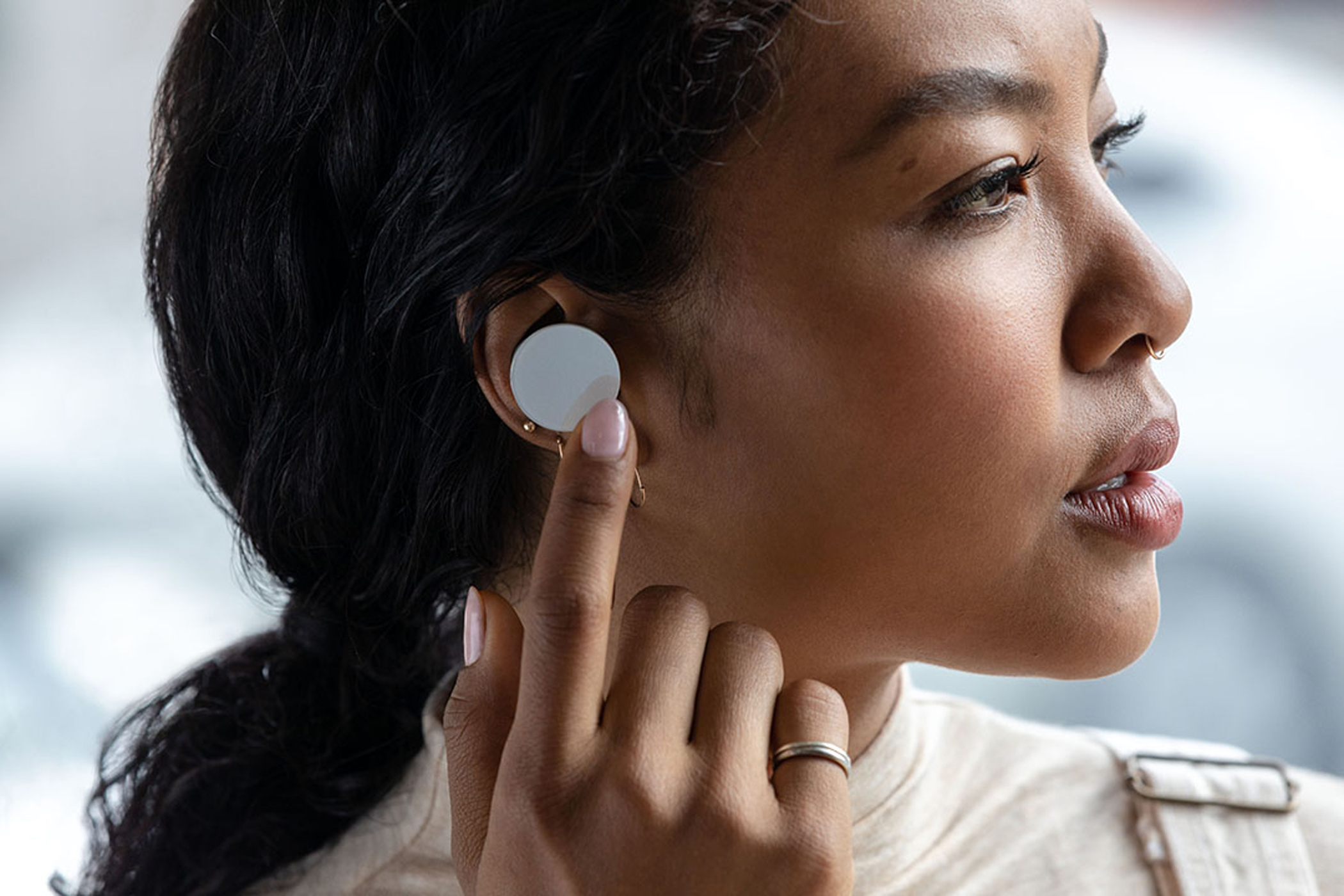Microsoft on Wednesday unveiled a handful of new Surface devices, including a pair of unexpected show-stoppers that came in the form of the Surface Neo and Surface Duo, a pair of dual-display devices revealed by Chief Product Officer Panos Panay. “This is industry-pushing technology, and it’s technology pushing possibilities,” said Panay while revealing the gadgets.
The Surface Neo features a pair of 9-inch screens and a 360-degree hinge that allows you to fold it around completely or close it like a book. It’s sleek, silver, and looks like a shrunken Surface Book when closed. The hinge lets the Neo assume multiple positions, similar to other 360-degree laptops.
The Surface Neo also has additional accessories for those who don’t want an all-touch experience. A detachable magnetic Surface Pen and keyboard can be placed on either display when typing, and alter the layout of the display to fit multitasking niceties like minimized videos, your catalog of emoji, or a trackpad. The Neo is powered by an Intel processor, and runs the upcoming Windows 10X, Microsoft’s variant of its operating system made for dual-screen devices.

Perhaps even more surprising is the Surface Duo — and not only because it’s powered by Android as opposed to Microsoft’s Windows OS. It uses the same 360-degree hinge and dual-screen design as the Neo, but shrinks down the form factor, with a pair of 5.6-inch screens. Like the Neo, the Duo can run multiple apps at once, and can turn that second display into a touchscreen keyboard or gamepad. Thanks to the My Phone app, calls, messages, photos, and so on can sync with your Windows 10 PC, making it easy to work on your laptop while handling incoming messages or calls from your Duo.
The Surface Duo and Neo are both slated for release next year as Microsoft works with developers to create software for the devices. It’s too early to tell whether Microsoft’s adoption of Android for the upcoming Duo will end better than the company’s previous attempt with Windows Phone, but the adoption of Android could make the device more appealing to developers already familiar with the platform.

Microsoft also debuted the Surface Pro X, which is powered by Microsoft’s own mobile processor made in concert with Qualcomm. Compared to its Intel-powered Surface Pro 7, the new Surface Pro X is slimmer, lighter, and features a generally softer look. It’s got a 13-inch display, a pair of USB-C ports, and integrated LTE connectivity, all in a form factor similar to the Surface Pro 7, but just over 5 millimeters thick.
The Surface Pro X also features Microsoft’s new, rechargeable Surface Slim Pen integrated into its type cover, which has an eraser where you’d normally find one on your average, non-smart pen. Available November 5, customers can pre-order the Surface Pro X today for $999.
Adding to its family of new audio products, Microsoft showed off its new Surface Earbuds, wireless earbuds that feature some interesting Microsoft office integration. The Surface Earbuds are gesture-controlled, letting you tap and swipe between songs in apps like Spotify.

There’s additional support when it comes to Microsoft Office apps, too. Thanks to its directional dual-mic array, and Office’s integration with Microsoft’s cloud services, Surface Earbuds enable real time captioning when you talk during presentations, and support real-time translation of over 60 languages. The Surface Earbuds can last for eight hours before a recharge, and 24 hours with the included charging case. Available later this year, the Surface Earbuds will cost $249.
Microsoft also revealed some more traditional Surface devices, including the Surface Pro 7 and Surface Laptop 3. The Surface Pro 7’s biggest addition is the new USB-C port, along with a new type cover with improved key travel.
The Surface Laptop 3 has undergone a more structural revision. Available in both 13- and now 15-inch options, the laptops feature new Intel quad-core processors, which make it twice as fast as the previous Surface Laptop 2 and “three times more powerful than MacBook Air,” according to Panay. Other refinements include a larger trackpad, a keyboard with improved key travel, and improved repair options thanks to its modular construction, which lets you remove elements like the fabric keyboard cover and internal storage drive. It also features a graphics processor co-engineered alongside AMD, and a fast-charging battery that can reach 80% in around an hour. Both 13- and 15-inch Surface Laptop 3 devices will be available for pre-order today, and available October 22 for $999 and $1,199 respectively.
More Must-Reads from TIME
- Donald Trump Is TIME's 2024 Person of the Year
- Why We Chose Trump as Person of the Year
- Is Intermittent Fasting Good or Bad for You?
- The 100 Must-Read Books of 2024
- The 20 Best Christmas TV Episodes
- Column: If Optimism Feels Ridiculous Now, Try Hope
- The Future of Climate Action Is Trade Policy
- Merle Bombardieri Is Helping People Make the Baby Decision
Write to Patrick Lucas Austin at patrick.austin@time.com